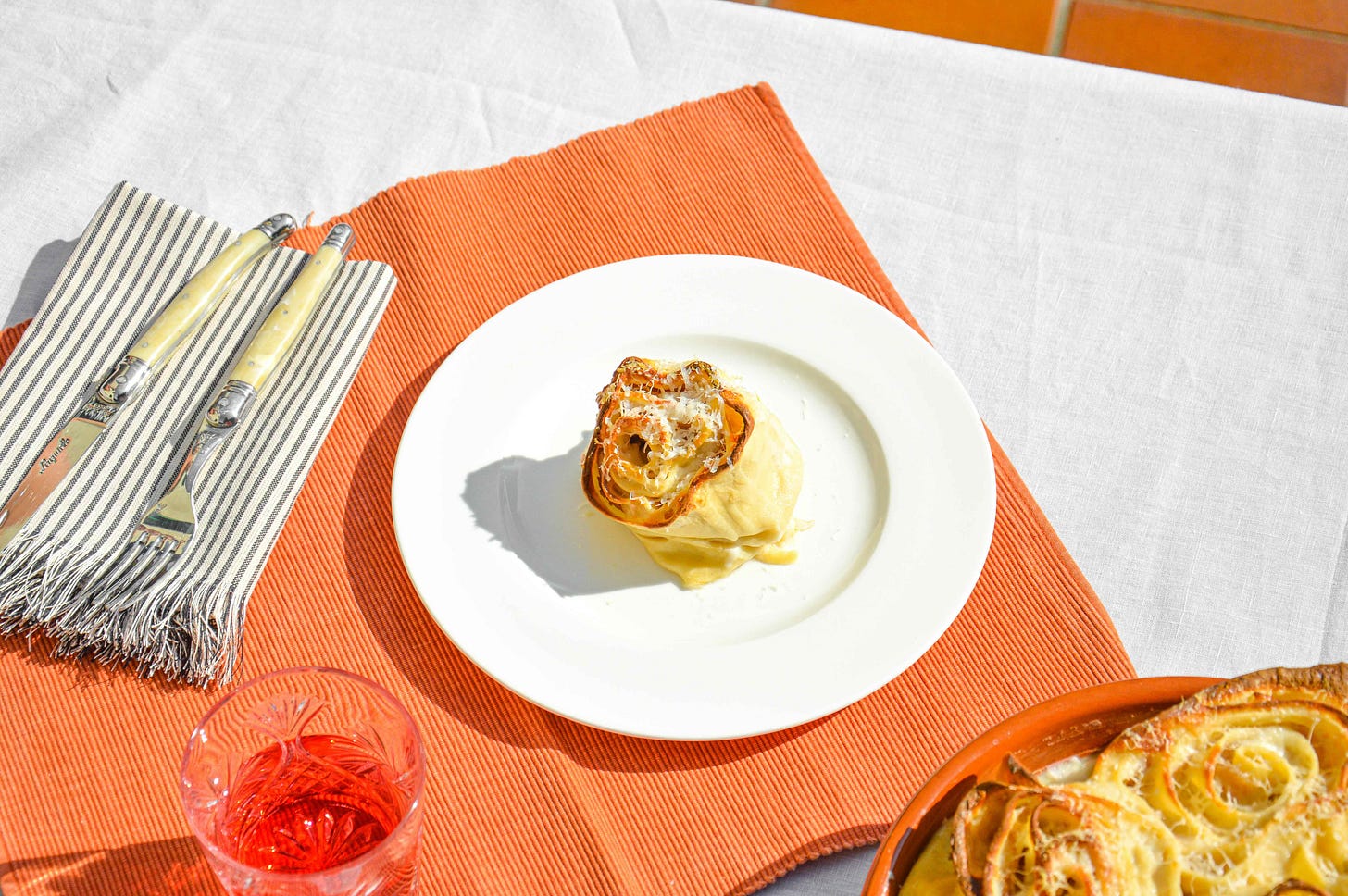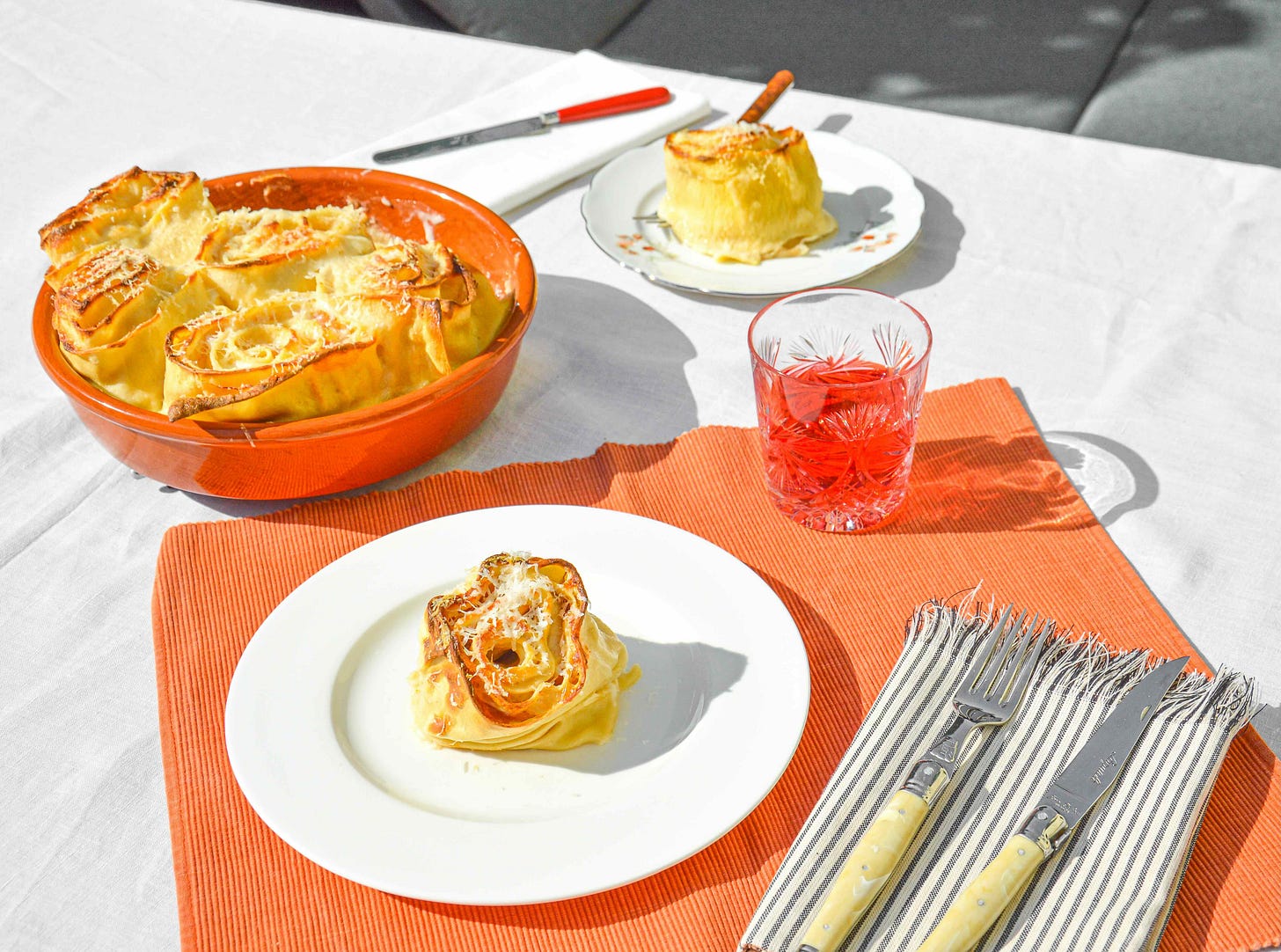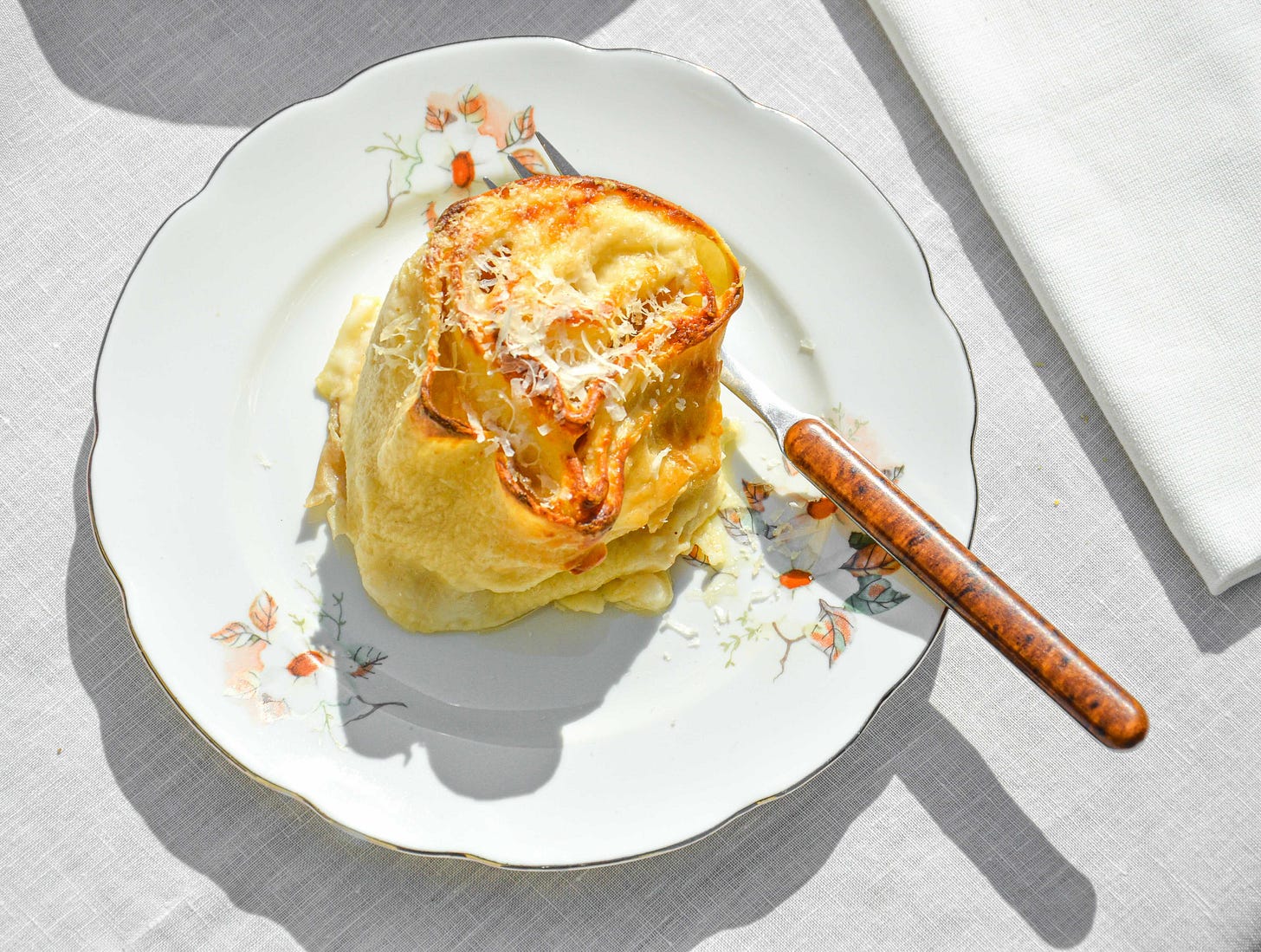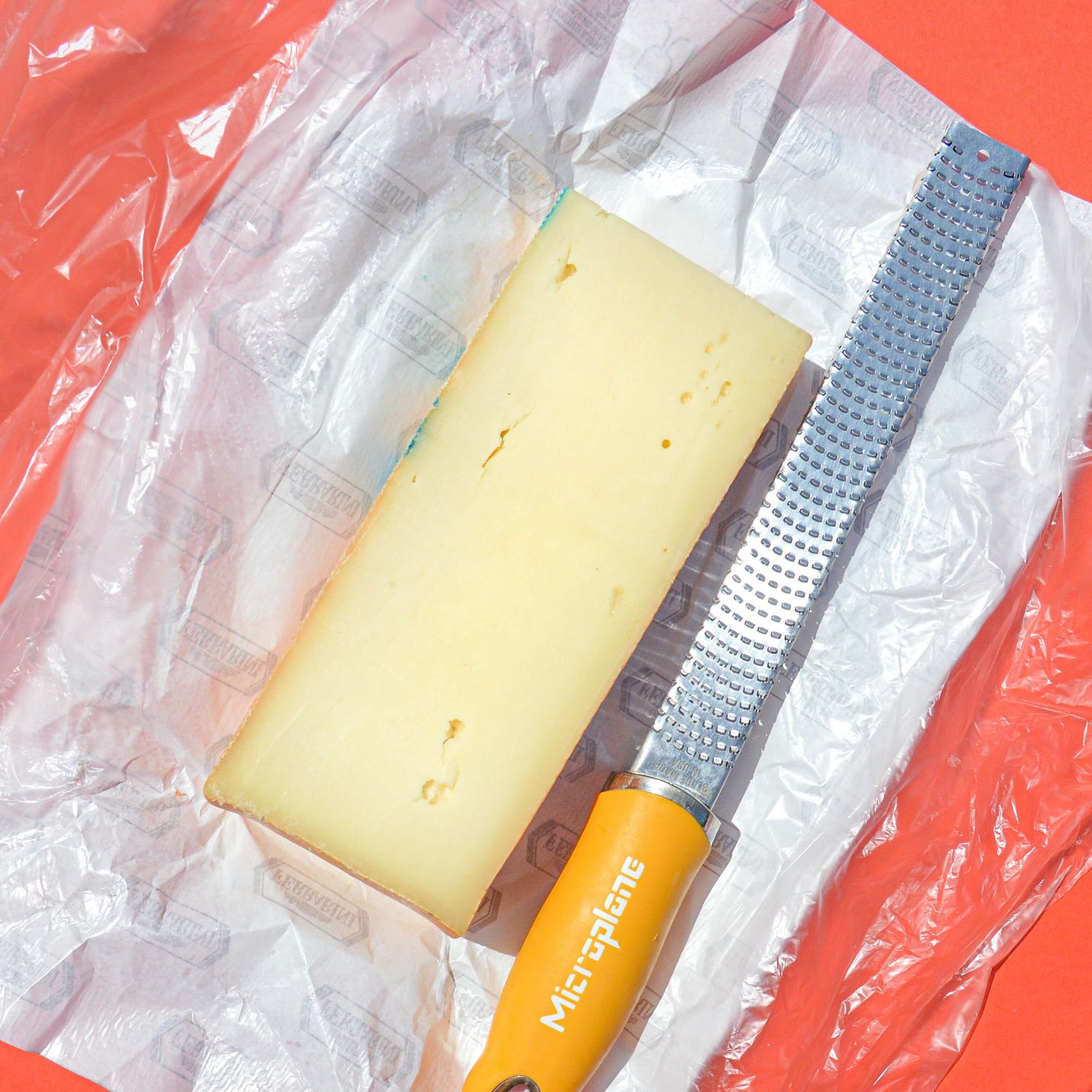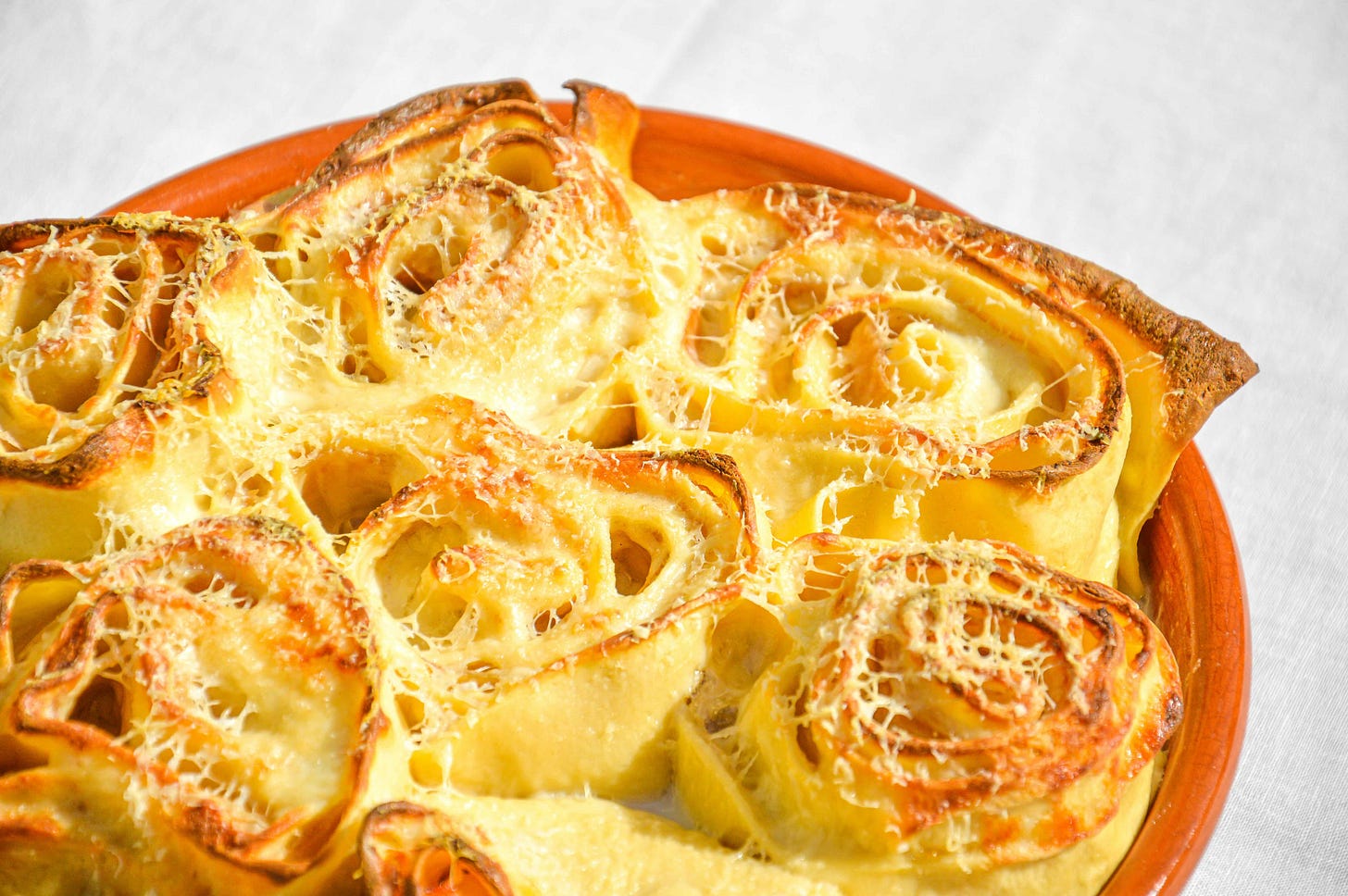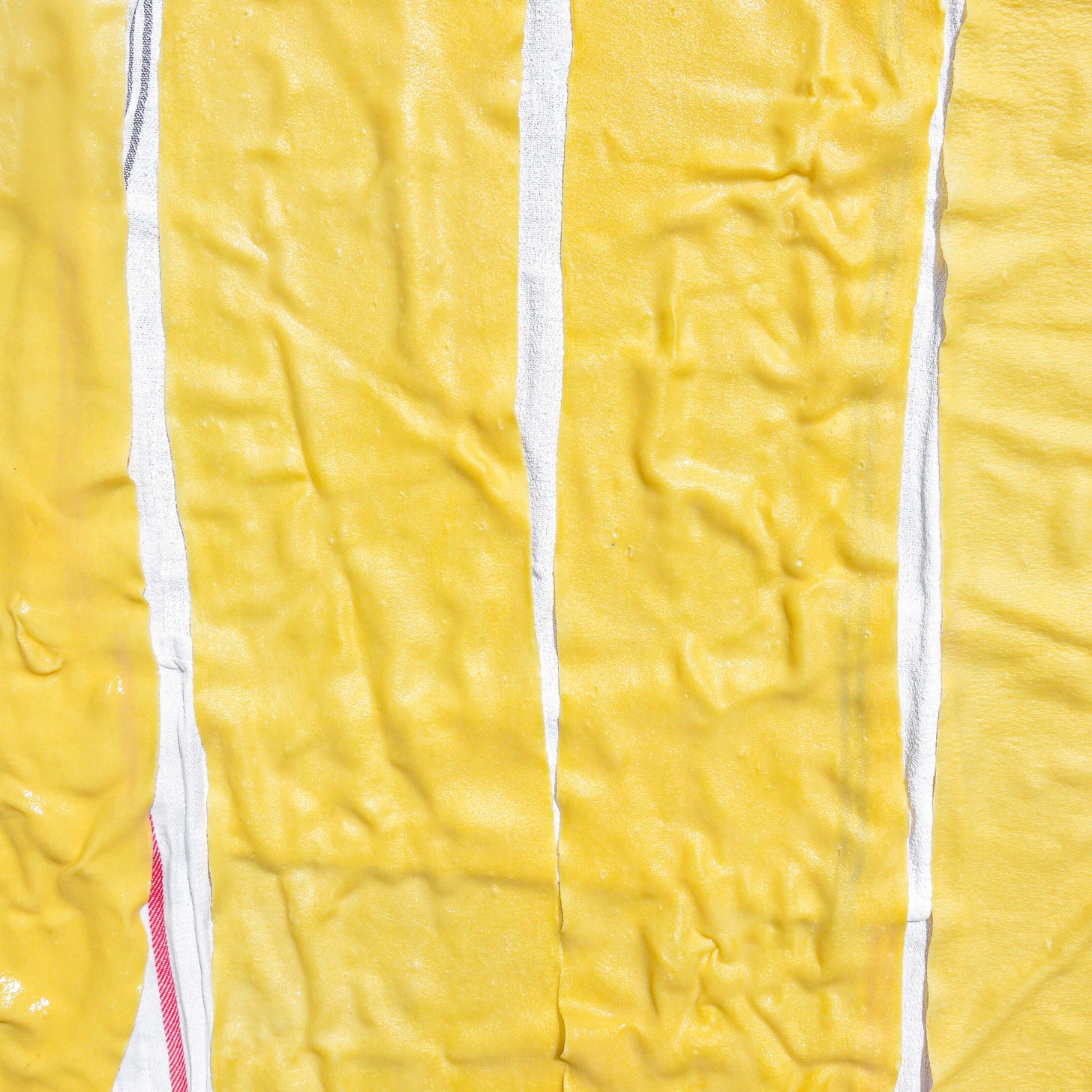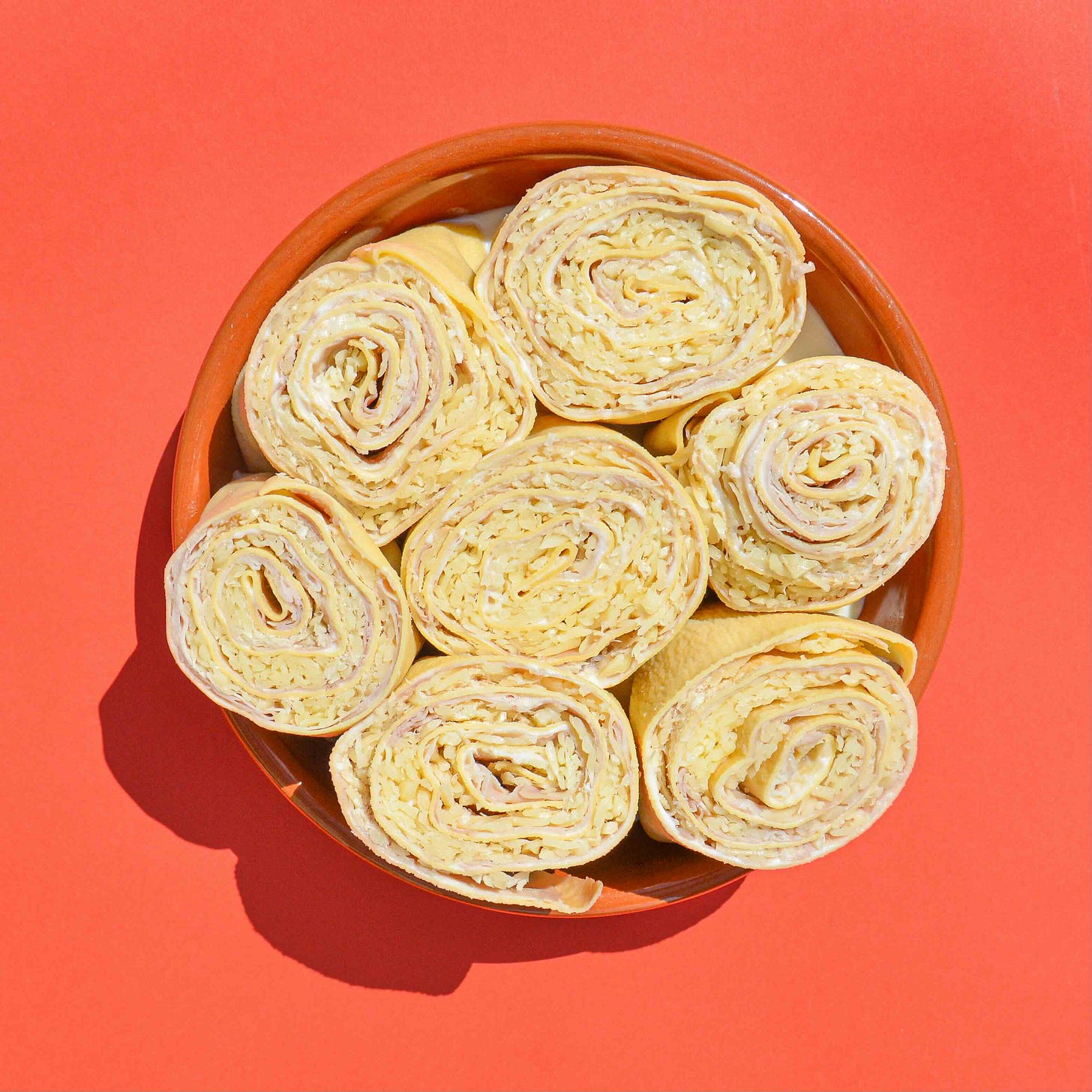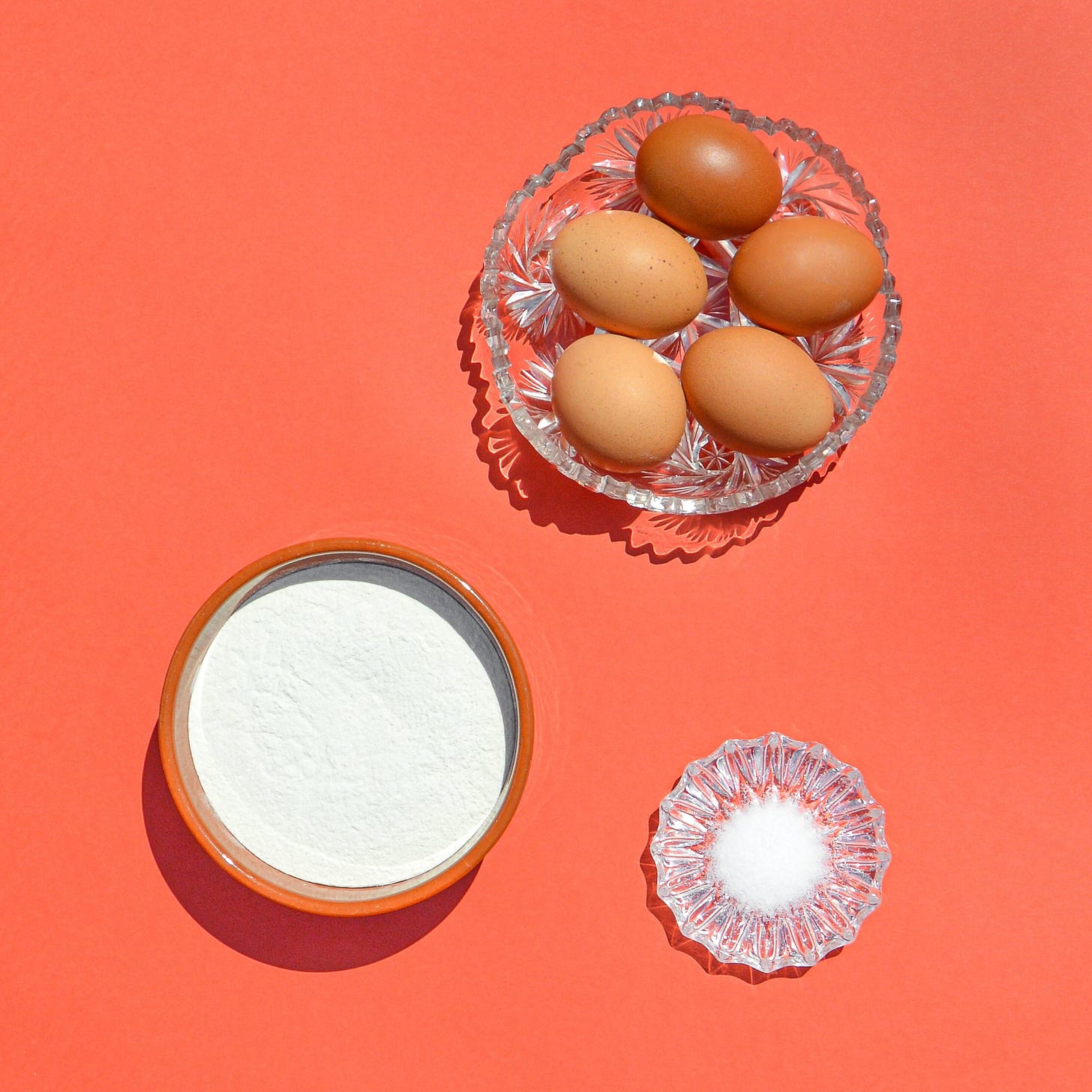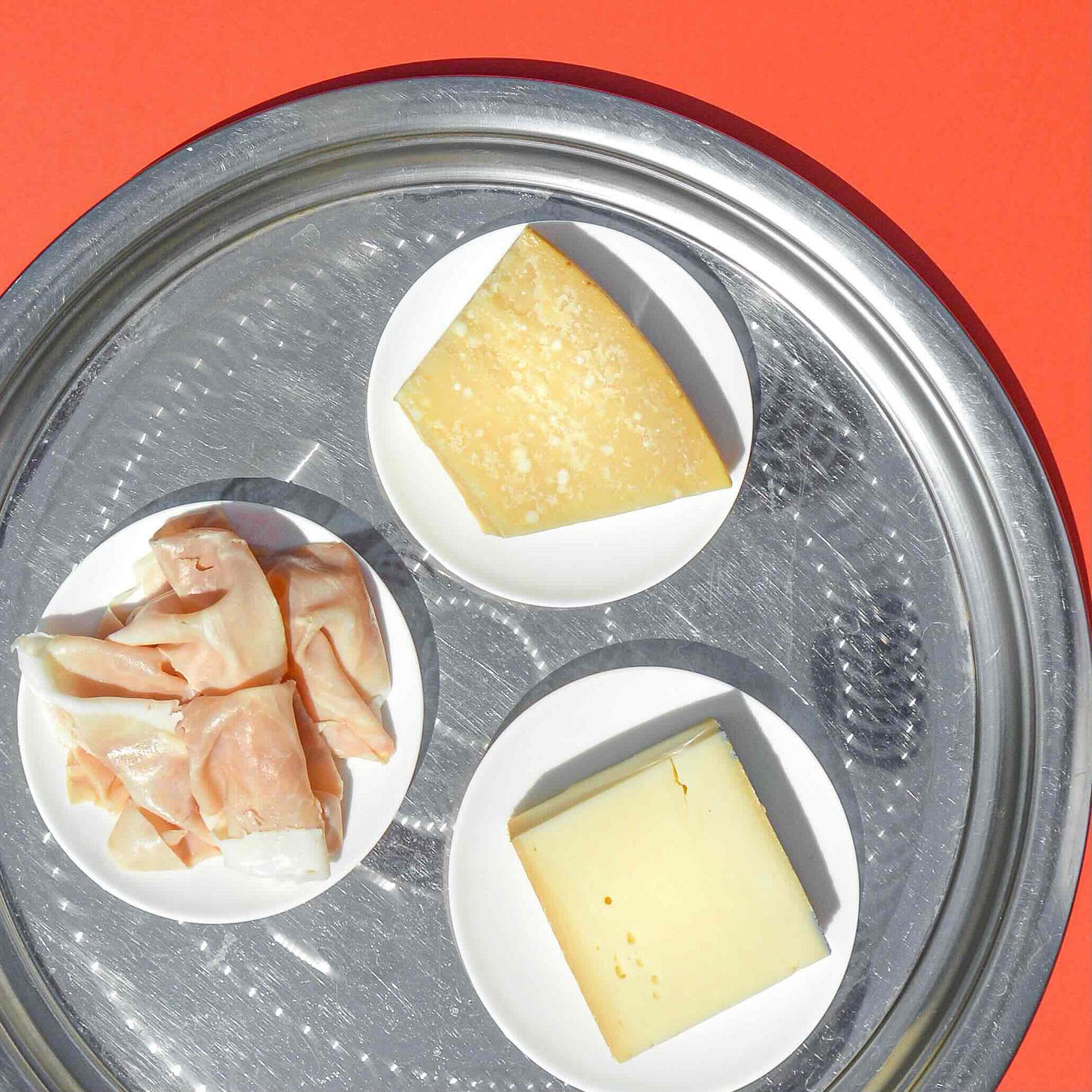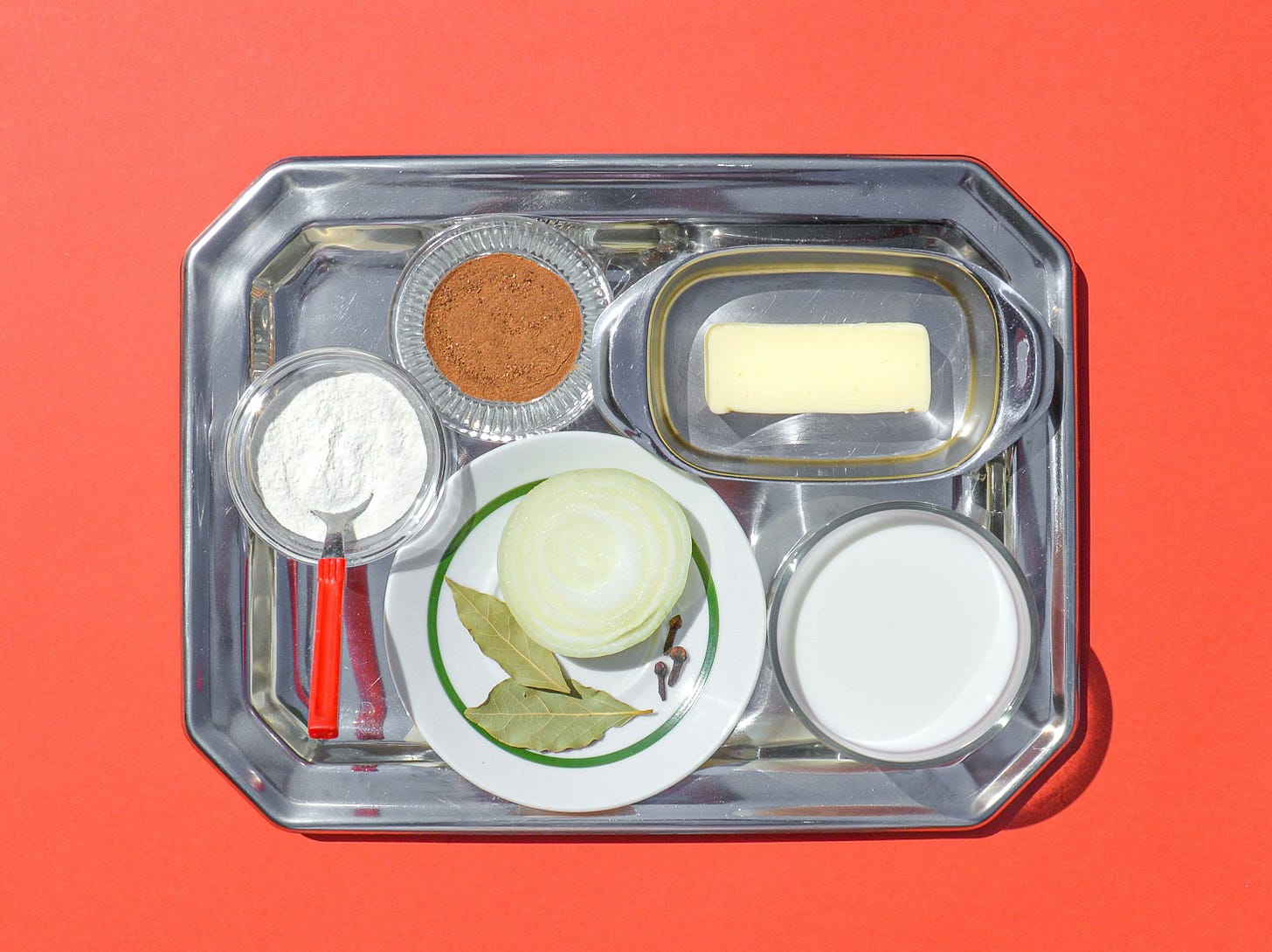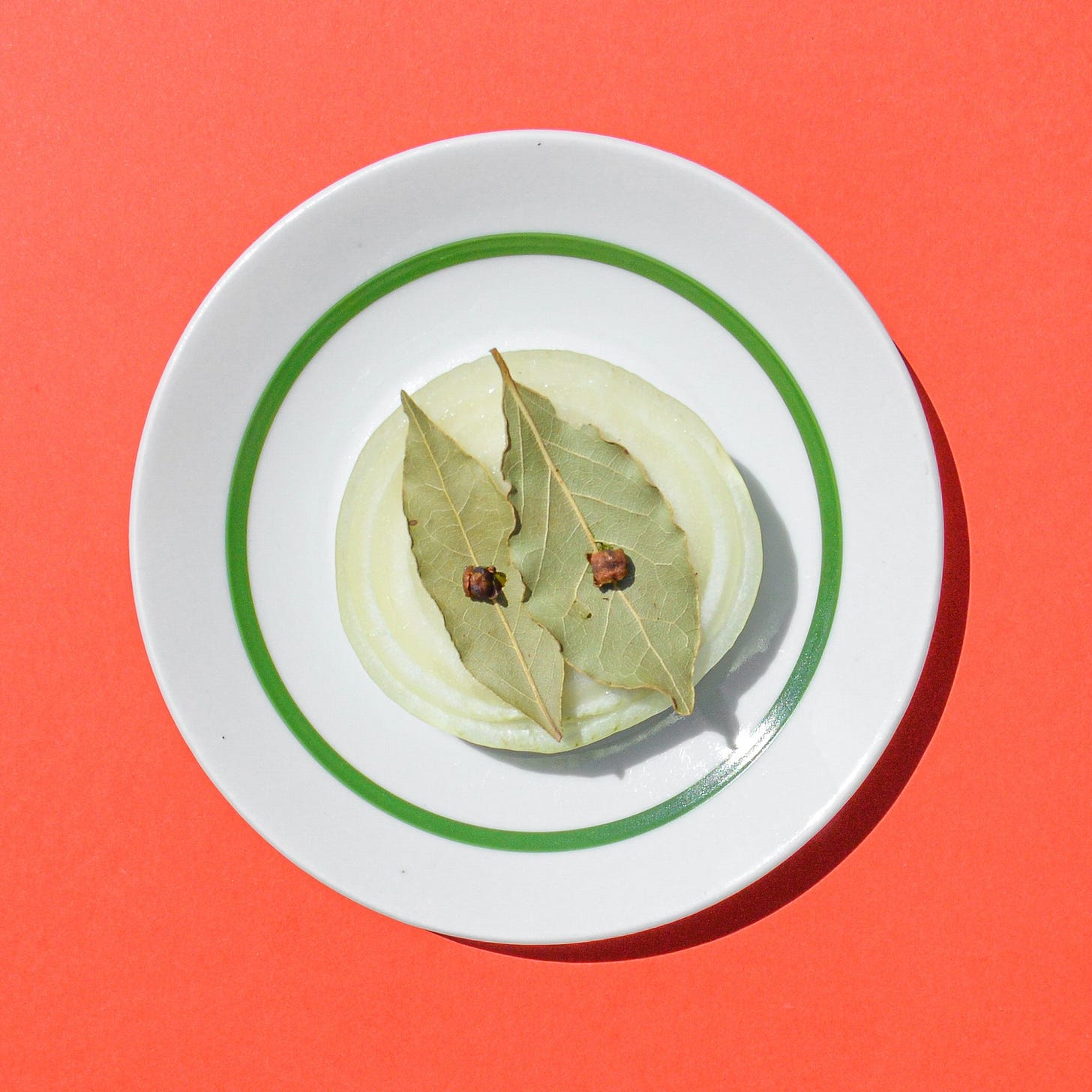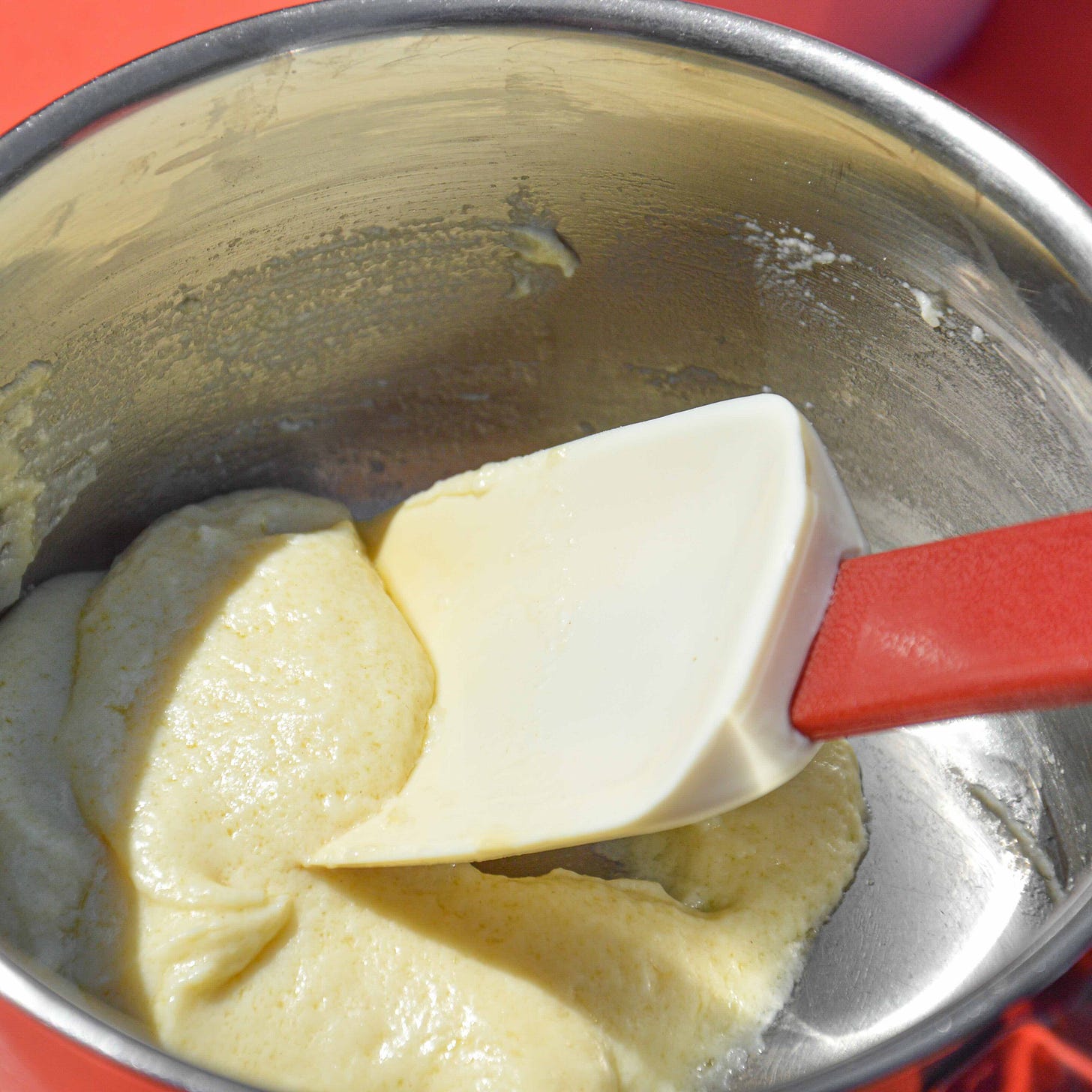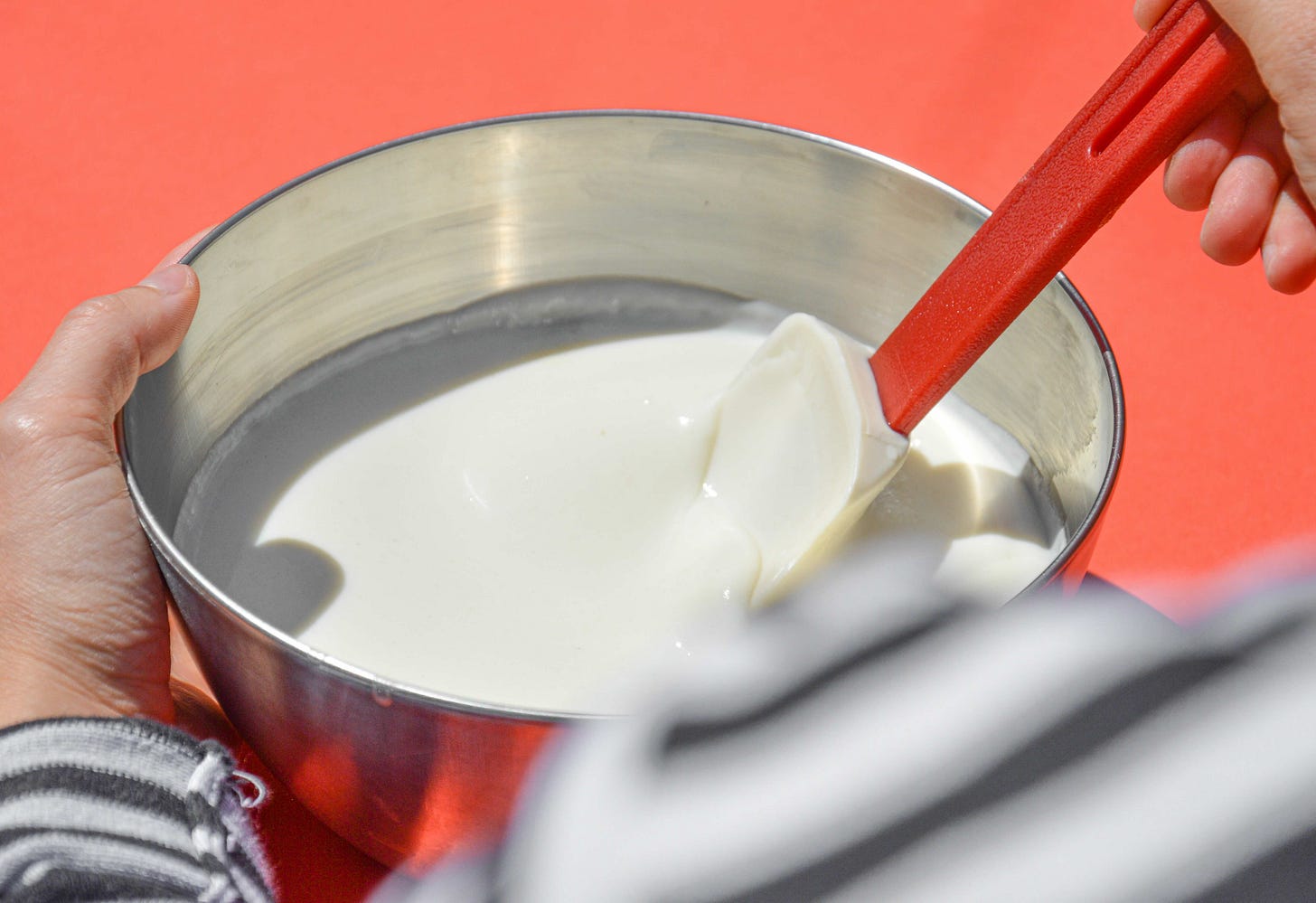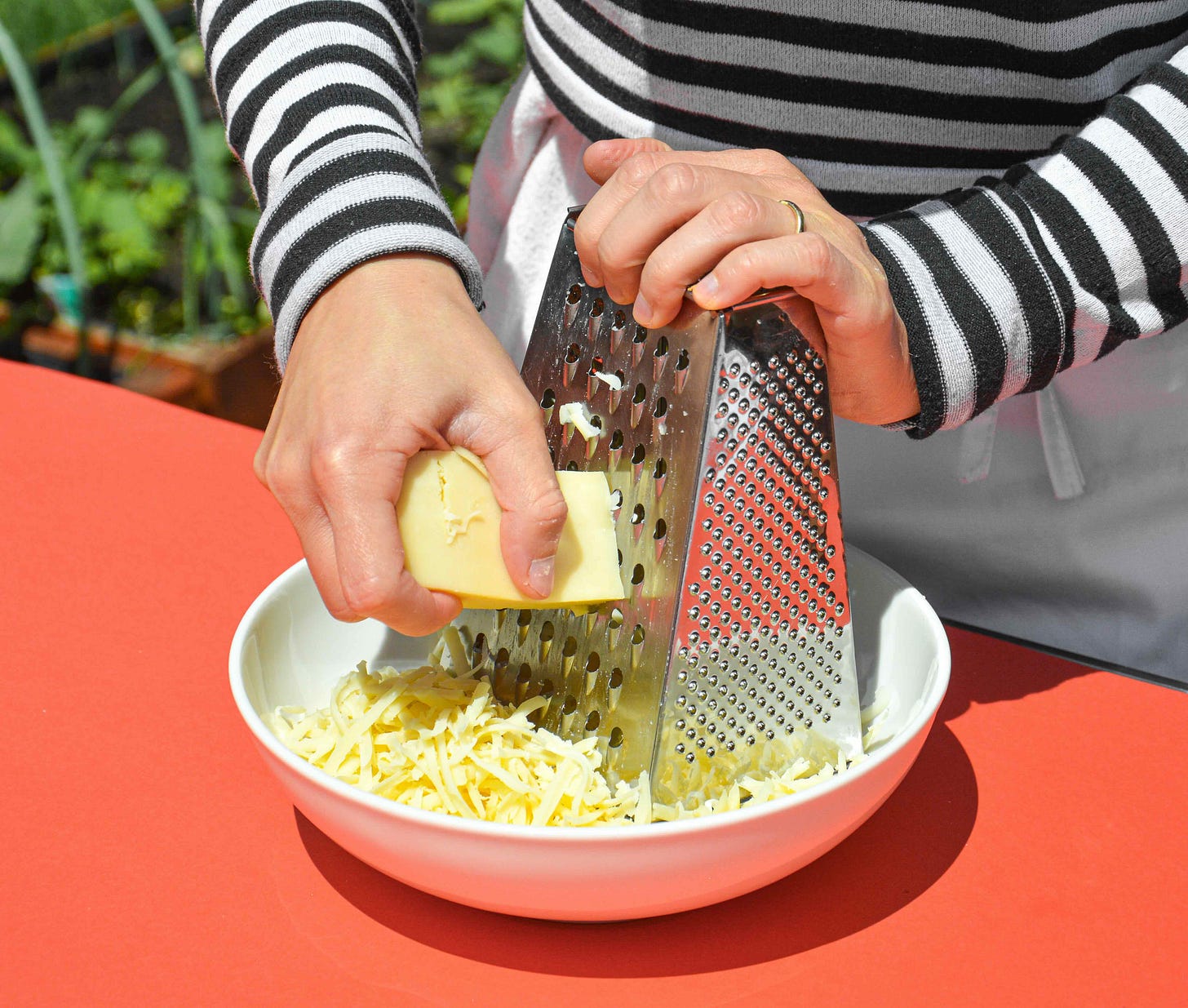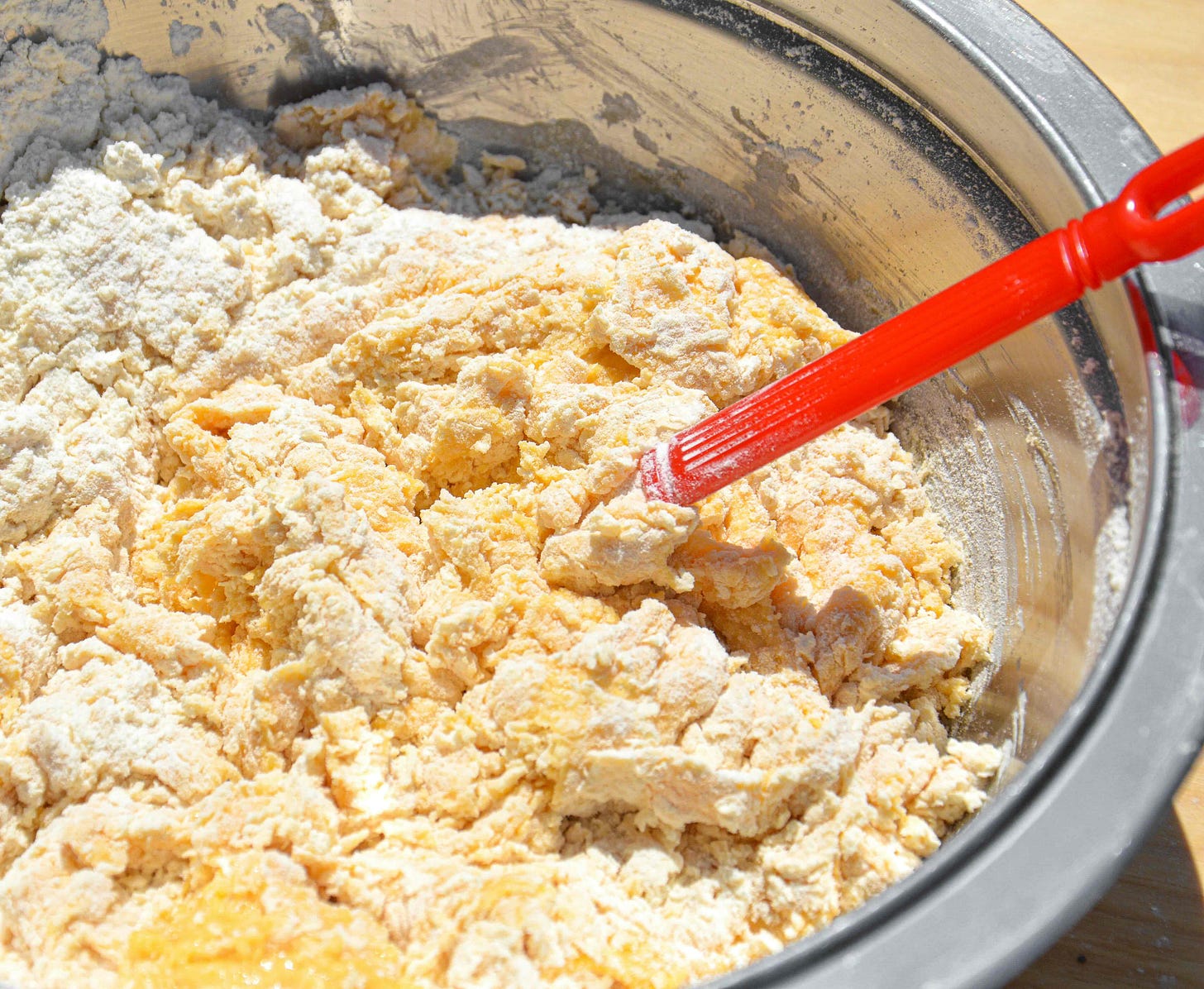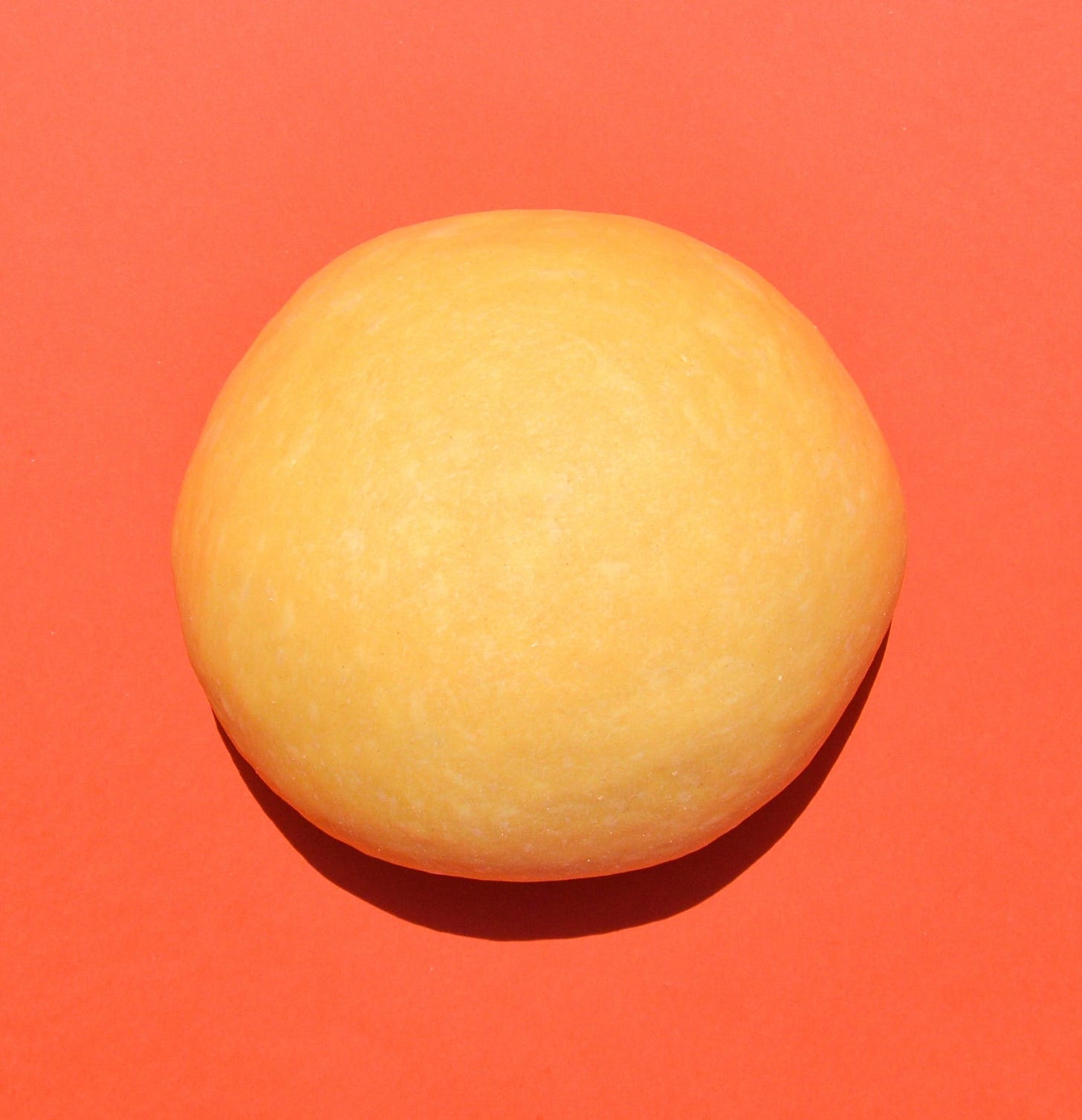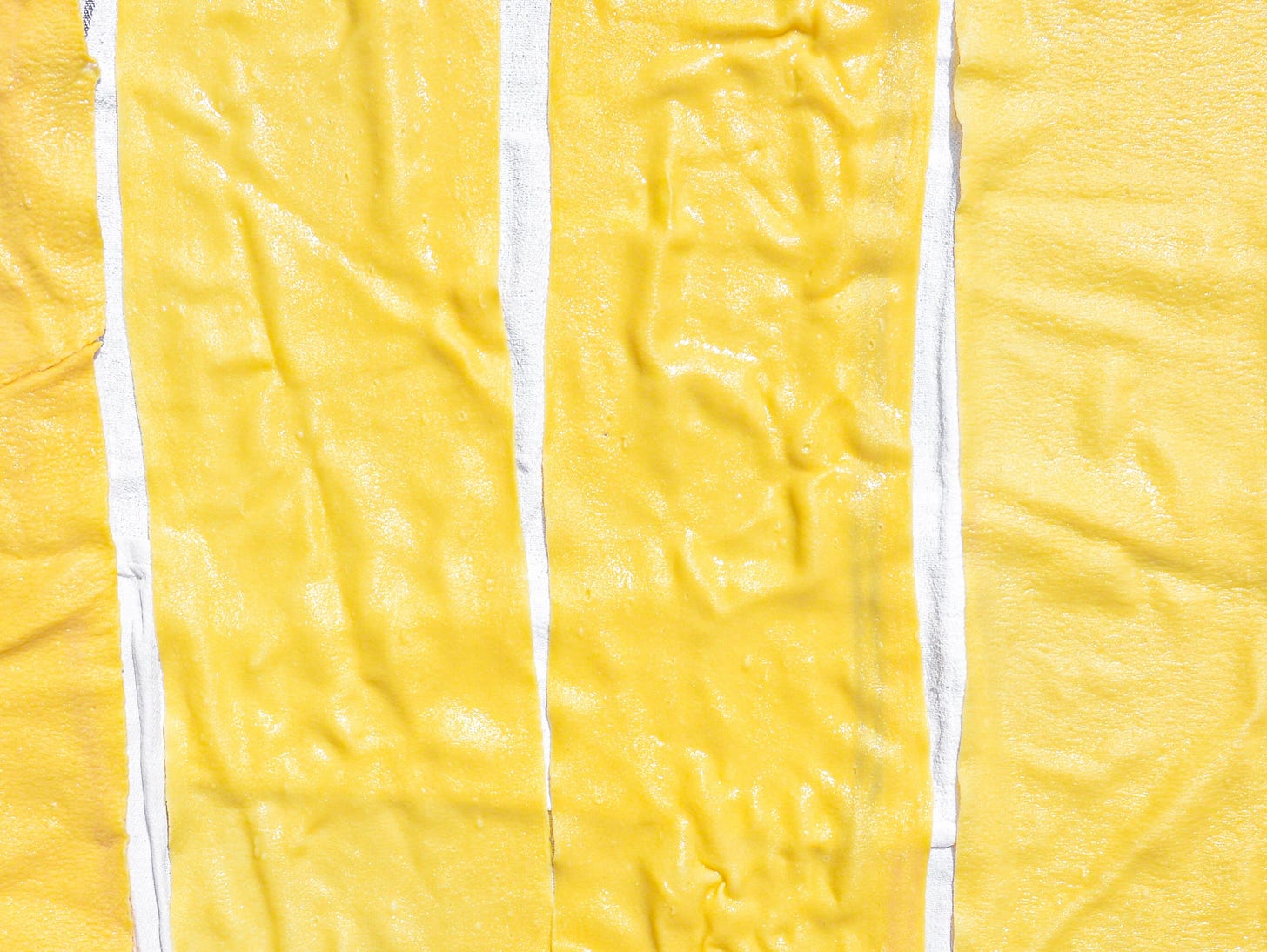rosette al forno
a recipe for baked Modenese pasta roses filled with fontina, Parmigiano Reggiano, prosciutto cotto, and béchamel
Rosette al forno
Serve: ~ 15 portions
Ingredients
Dough
500g 00 flour + for dusting
5 whole eggs
5 egg yolks
sea salt
Filling
200g Parmigiano Reggiano
600g fontina
600g prosciutto cotto
Béchamel
180g unsalted butter
180g plain flour
1.8l whole milk
1 small white onion or half an onion
2 bay leaves
2 cloves
a pinch of nutmeg
sea salt
Extra note
Rosette al forno is a baked pasta dish from Modena, typically made with fontina, Parmigiano Reggiano, prosciutto cotto, and béchamel sauce. Traditionally, rosette are smaller, the filling is kept on the lighter side, and the pasta logs are sliced into rounds about 4 cm thick. I made mine a bit larger, but feel free to cut them to your liking.
I used fontina, but asiago or provolone can also be used.
When buying prosciutto cotto, be sure to ask for it thinly sliced - it works best that way.
I’d also recommend picking up a bit more cheese than you think you'll need, especially if you like your dishes extra cheesy. It's always good to have a little extra on hand!
Method
Béchamel
Prepare an onion clouté by halving a medium onion, or using a small one whole, and studding it with 2 bay leaves and 2 cloves, as shown below.
In a small pot, prepare a white roux: melt unsalted butter, add sifted flour, and stir to form a smooth paste. Cook gently for about 2 minutes without letting it take on any colour, then set it aside to cool. The roux must be cold when adding milk - this helps prevent lumps from forming.
Meanwhile, in another small pot, gently warm the milk over low heat and infuse it with the onion clouté for about 15 minutes.
Once the milk is warm, transfer it to a heatproof jug and remove the clouté. Slowly pour the warm milk into the cold roux, whisking constantly off the heat. For a silky, lump-free texture, take your time with this step. Add the milk in small increments: pour a little at a time, whisk with one hand, and steady the pot with the other.
Bring the pot back on the heat. Once most of the milk is incorporated, bring the mixture to a gentle boil, whisking continuously until the sauce is completely smooth and homogenous. Lower the heat and let the béchamel simmer for 15 minutes over very low heat. If the sauce becomes too thick for your liking, simply whisk in a little more warm milk to loosen it. Keep in mind that béchamel will thicken further as it cools, especially once served.
Season with salt and add a pinch of nutmeg to taste.
Place a piece of cling film on top of the sauce (the wrap needs to touch the sauce) to prevent skin from forming.
Cheese
Grate fontina and Parmigiano Reggiano and set aside.
Dough
Whisk 5 whole eggs and 5 egg yolks together in a bowl.
In a large bowl, sift 500g of 00 flour and create a well in the centre. Pour the whisked eggs into the well. Using a fork, gently start mixing, gradually incorporating the flour into the eggs. Keep stirring until the eggs and flour are mostly combined.
Once the mixture begins to come together and becomes too thick to mix with a fork, as seen in the photo below, transfer it to the counter.
Begin bringing the dough together with your hands. At first, it may look shaggy and sticky, but be patient, and it will start to come together.
Knead the dough by pressing the heel of your palm in the middle of the dough, stretching it away from your body. Fold the dough over, press it down, and rotate it. Repeat this process until the dough becomes more pliable and noticeably smoother.
Flatten the dough, place it in a plastic bag, and let it rest for about 30 minutes at room temperature.
After the resting time, give the dough a few more kneads and it should look something like this:
Rolling the dough
Divide the dough into 4 equal pieces. Place 3 of the pieces in a plastic bag to keep them from drying out.
Take one portion of the dough and use your hands to press it into a rough square, making it easier to pass through the pasta machine.
Start with the widest setting (I began with number 1 on a Marcato Atlas machine) and run the dough through twice. If the dough gets sticky, lightly dust both sides with flour. Lay the thinned dough out horizontally, then fold the right side toward the middle and the left side over the top, as shown in the video.
Finally, roll out the dough diagonally with a rolling pin, dusting lightly with flour as needed.
Next, adjust the machine to setting number 2 and roll the dough through again. Fold it by bringing the right side to the middle and the left side over the top, then roll it out with a rolling pin.
Set the pasta machine to setting number 3 and feed the dough through. Continue rolling the dough through settings 4 and 5. Once you've done that, cut the dough in half, then roll each half through setting number 6 twice, dusting both sides with flour as you go.
Place the dusted sheets on a piece of cling film and cover them with a kitchen cloth to prevent drying.
Repeat the process with the remaining dough.
Assemble the pasta
Bring a large pot of water to a boil and season generously with salt.
On the kitchen counter, lay out a couple of clean, dry kitchen cloths. Prepare a bowl of cold water (preferably with ice), along with tongs and a metal spider strainer.
Once the water starts bubbling, reduce the heat to a simmer and blanch the pasta for no longer than a minute. Be sure not to overcrowd the pot - I recommend no more than 3 sheets at a time.
Use the tongs and the spider strainer to remove the pasta sheets from the water. Carefully plunge it into the cold water to stop the cooking process. Gently lift the sheets with your hands and transfer them to a kitchen towel. Pat them dry.
Spread a layer of béchamel over the pasta, but be sure to save some for layering at the bottom of the baking dish and for topping the rosette later.
Layer slices of prosciutto cotto, grated fontina, and Parmigiano Reggiano, reserving some Parmigiano Reggiano for serving.
Once the cheese is evenly distributed, tightly roll the pasta into logs. Cut the logs into 7cm pieces, or 4cm if you prefer thinner slices.
Pour a small amount of béchamel into the bottom of the baking dish. Arrange the rosette with the cut side down, then cover them with more béchamel. The rosette al forno dish is now ready to bake.
Serving
Preheat the oven to 200°C.
Bake the rosette for about 30 minutes, or until bubbly, keeping an eye on the dish.
In the final minutes, sprinkle some grated Parmigiano Reggiano on top and bake for a few more minutes.
Once done, let it rest for 5 minutes before transferring the rosette to a plate.





